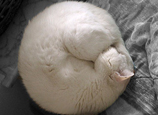
JERUSALEM, July 10 (Xinhua) -- Archaeologists in Israel have unearthed parts of a unique sphinx belonging to one of ancient Egypt's pyramid-building kings, local media reported Wednesday.
The relics were found in Tel Hazor National Park in northern Israel by archeologists led by Ben-Tor, a professor at Hebrew University's Institute of Archaeology, and Sharon Zuckerman, a lecturer at the same institute.
"This is the only known sphinx of King Mycerinus, who built one of the famous Giza pyramids," Ben-Tor told Xinhua on Wednesday, referring to the group of pyramids located in Egypt's Giza governorate adjacent to Cairo.
The sphinx bears a hieroglyphic inscription between its front legs with the name of King Mycerinus, who ruled in the third millennium BC. Another inscription reads "Beloved by the divine manifestation... that gave him eternal life."
The archeologists estimated that the original granite statue weighed about 500 kg.
Ben-Tor said the sphinx is the only one "discovered in the entire Levant area (the land east to the Mediterranean)," adding it was likely brought here from Egypt's ancient city of Heliopolis, north of modern Cairo.
However, the archeological team is not sure about how the statue turned up in Hazor, since there is no record of any relationship between Egypt and Israel during the time of Mycerinus.
More likely, the statue was brought to Israel in the second millennium BC during the dynasty known as Hyksos, who originated in Canaan, the archeological team said in a statement published by Hebrew University.
It could also have arrived in Hazor during the 15th to 13th centuries BC, when Canaan was under Egypt's power, as a gift from an Egyptian king to a local ruler.
Hazor was a biblical-era city. Its population during the second millennium B.C. is estimated to have been around 20,000, making it the largest and most important city in the entire region.
The sphinx will be displayed in the Israel Museum in Jerusalem.
















 Wild Siberian tiger kills cattle in NE China
Wild Siberian tiger kills cattle in NE China


![]()
